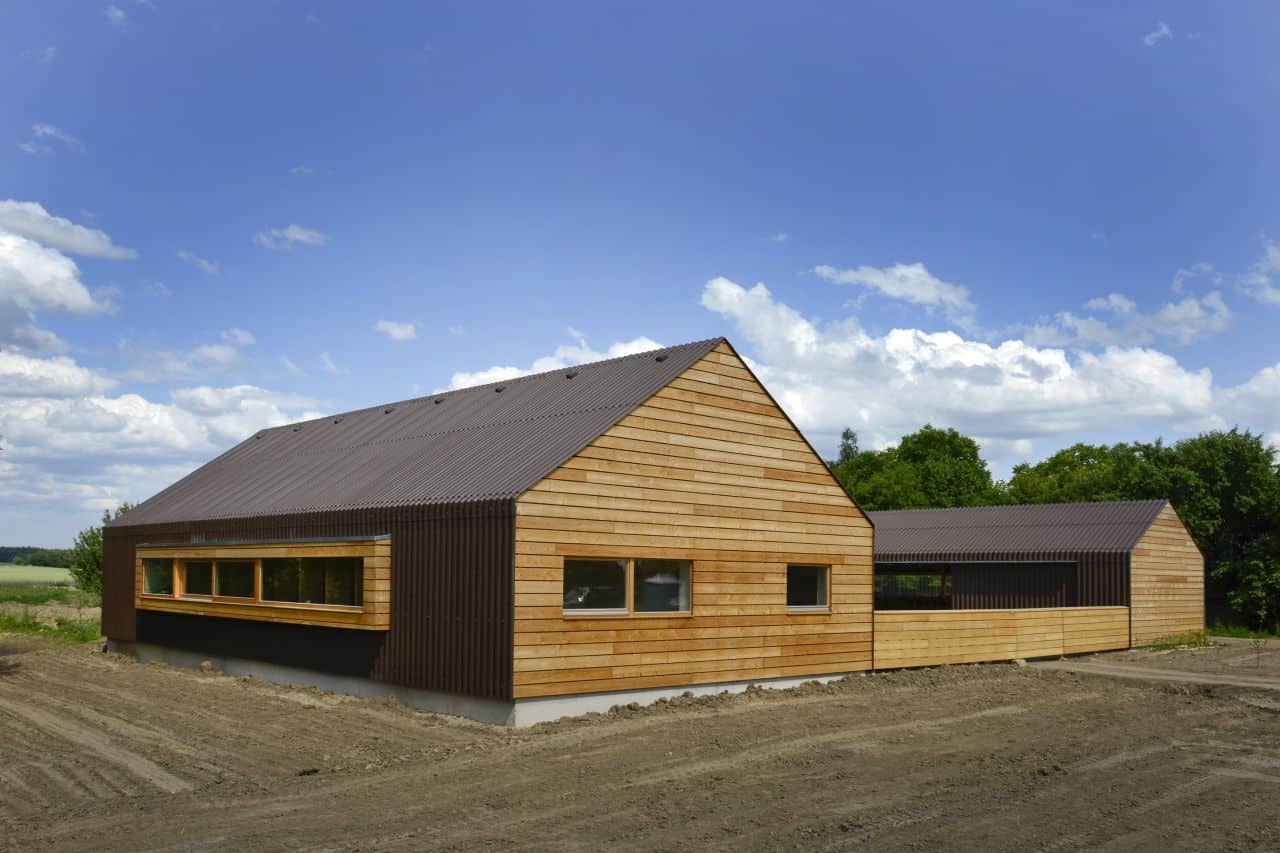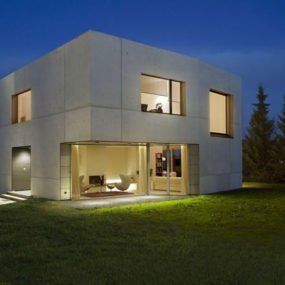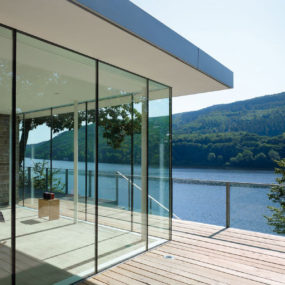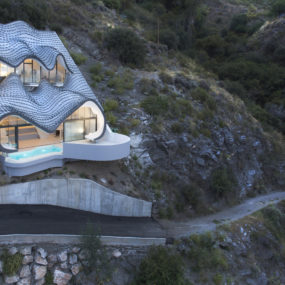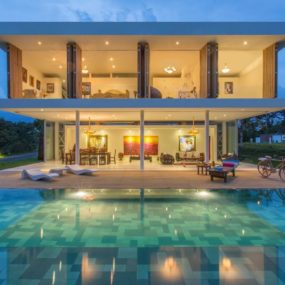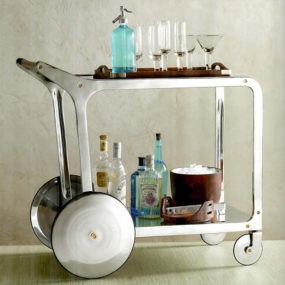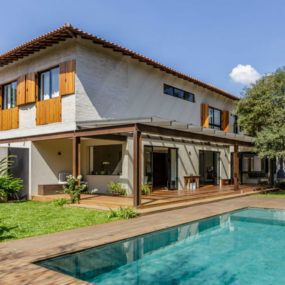German architecture firm Baufritz has created the Smart House to be completely self-sufficient and, in fact, it is the first home to be certified as such in Germany. Located in Poing, Bavaria, it is a model house and is one of the most innovative designs in all of Europe.

Combining traditional alpine elements with a classic Bauhaus style, the 2-story home features a low sloped, protruded gabled roof, a facade of glass and silver fir shingles, and a small pond located between the main entrance and the deck.

To satisfy all the needs for electricity and to heat the house, three sources of energy are utilized: a hydrogen fuel cell, a wind turbine and a photovoltaic solar system. The electricity surplus is used to charge an electric car via the conveniently located carport, that is also wired into the system. The 3 aforementioned energy sources along with their storage batteries also keep the LED lighting and water heating systems fully charged and ready to use, and any extra power is rerouted into the public grid.
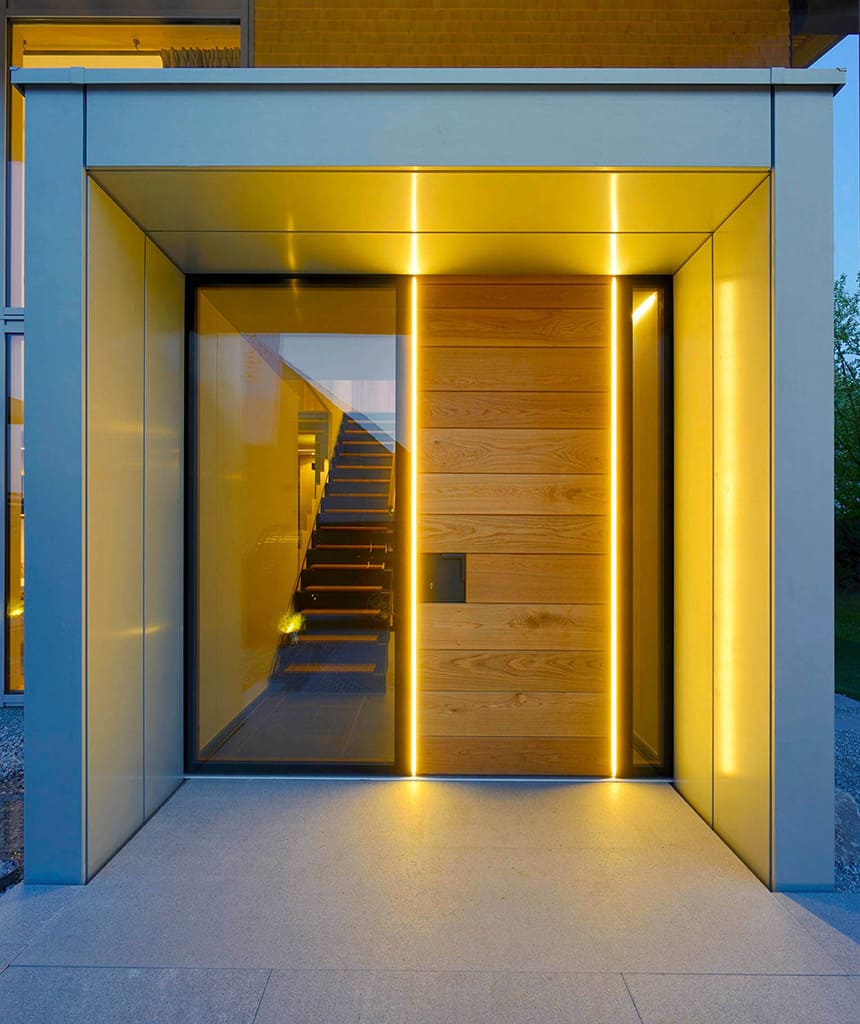
The main entrance features some of the modern LED lights used throughout the home. The vertical slashes of light add a geometric counterbalance to the horizontal cladding on the door.

Once inside the home a hallway leads past a guest washroom to either the office or the social zone while a stairwell leads to the bedrooms upstairs.
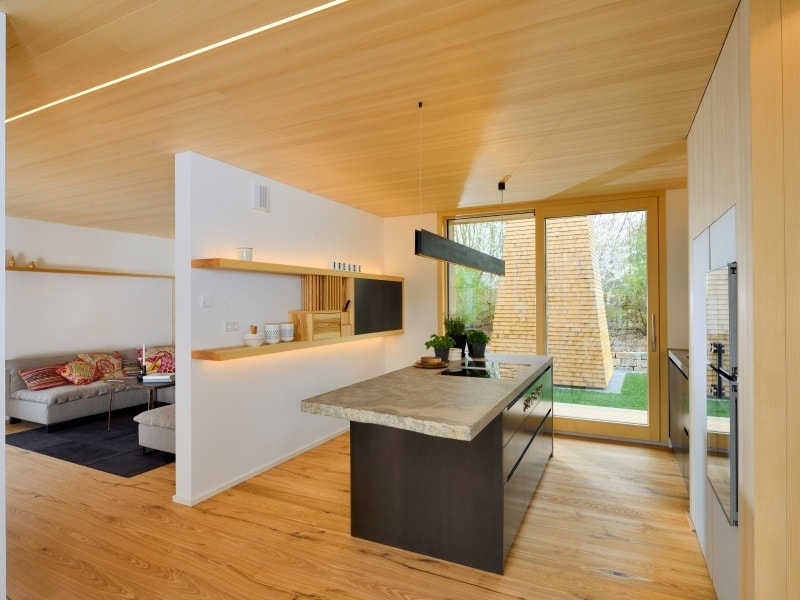
The interior as with the exterior of the model house is designed with an Alpine Chic aesthetic and consists of natural limestone floors as seen in the entryway as well as ash and fir wood floors, walls, ceiling and furniture; dark steel balustrade on the stairwell, kitchen cabinetry and some furnishings.
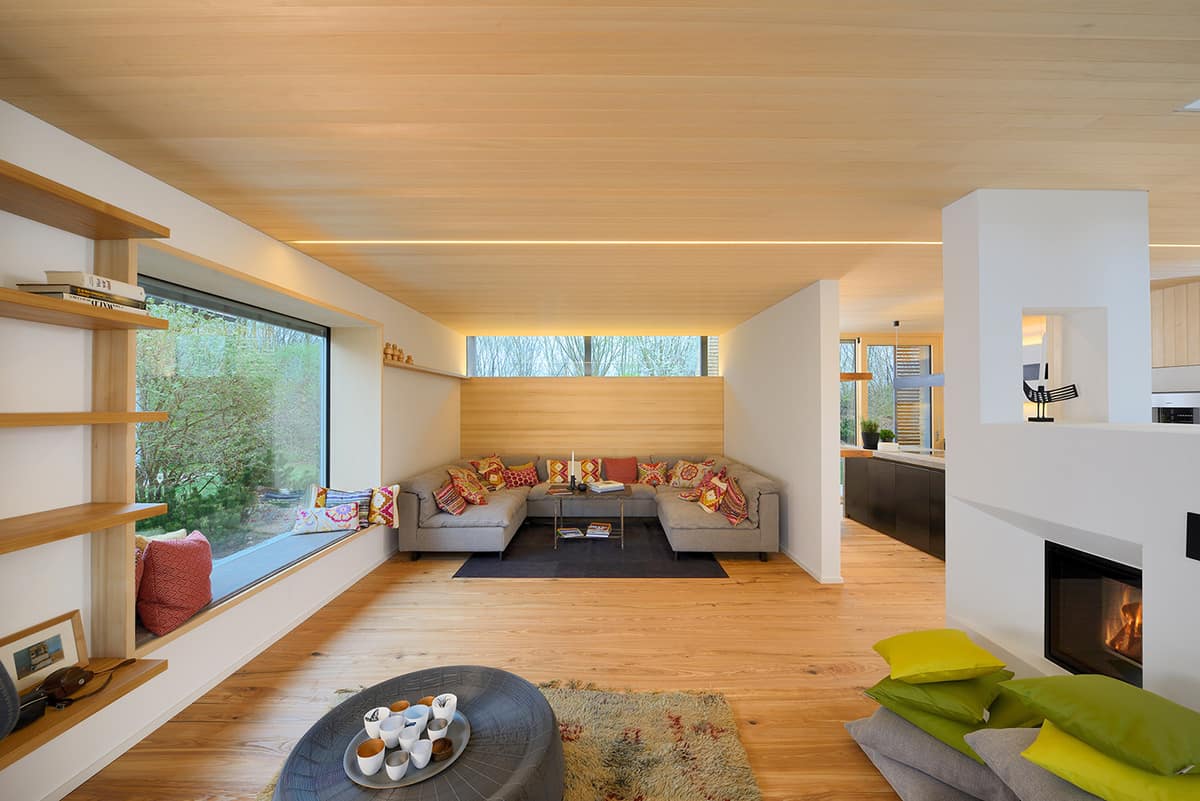
The ceilings are kept low to retain heat and all materials have been tested for their health both to the people who will reside in them and to the environment that surrounds the home. This holistic approach to building materials is a model for climate protecting in building construction.
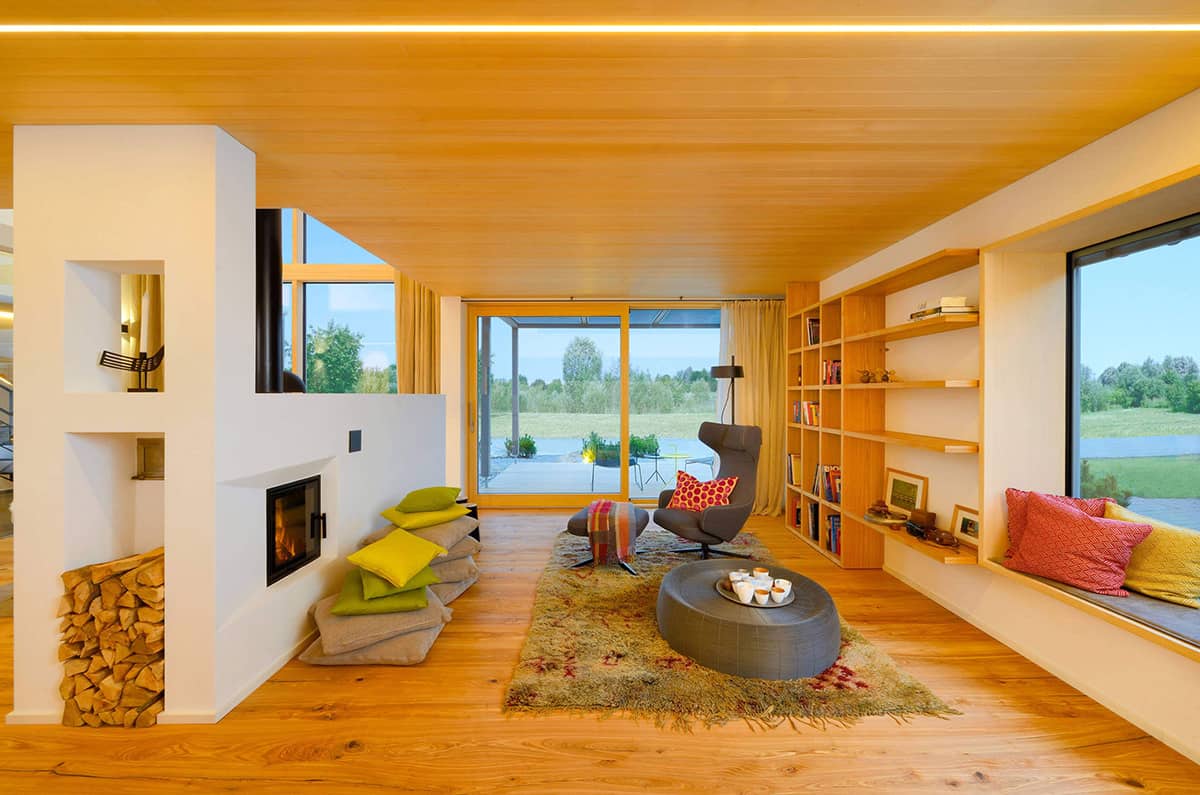
The large amount of glazings and open floor plan create connectivity to the surrounding landscape as do the natural materials used throughout.

With the level of energy efficiency achieved as ‘KfW Efficiency House 55’ (EU standards), this is Germany’s first house design that has the Minergie-ECO certification, which means the home is certified in energy efficiency, ecology, biology and living value.
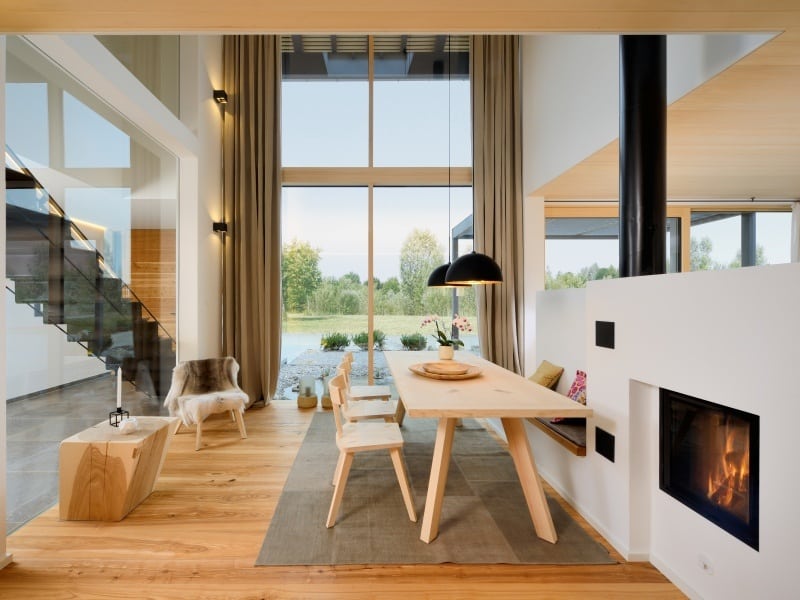
This Smart House also got the ‘Baufritz Health Building Pass’ due to its combination of wind power, 80% consumption photovoltaics, advanced fuel cell technology and sustainable environmental design. What’s really interesting is the use of hydrogen within its Viessmann fuel cell heater – this is a first in Germany. The natural gas-powered fuel cell can supplement energy requirements if need be.
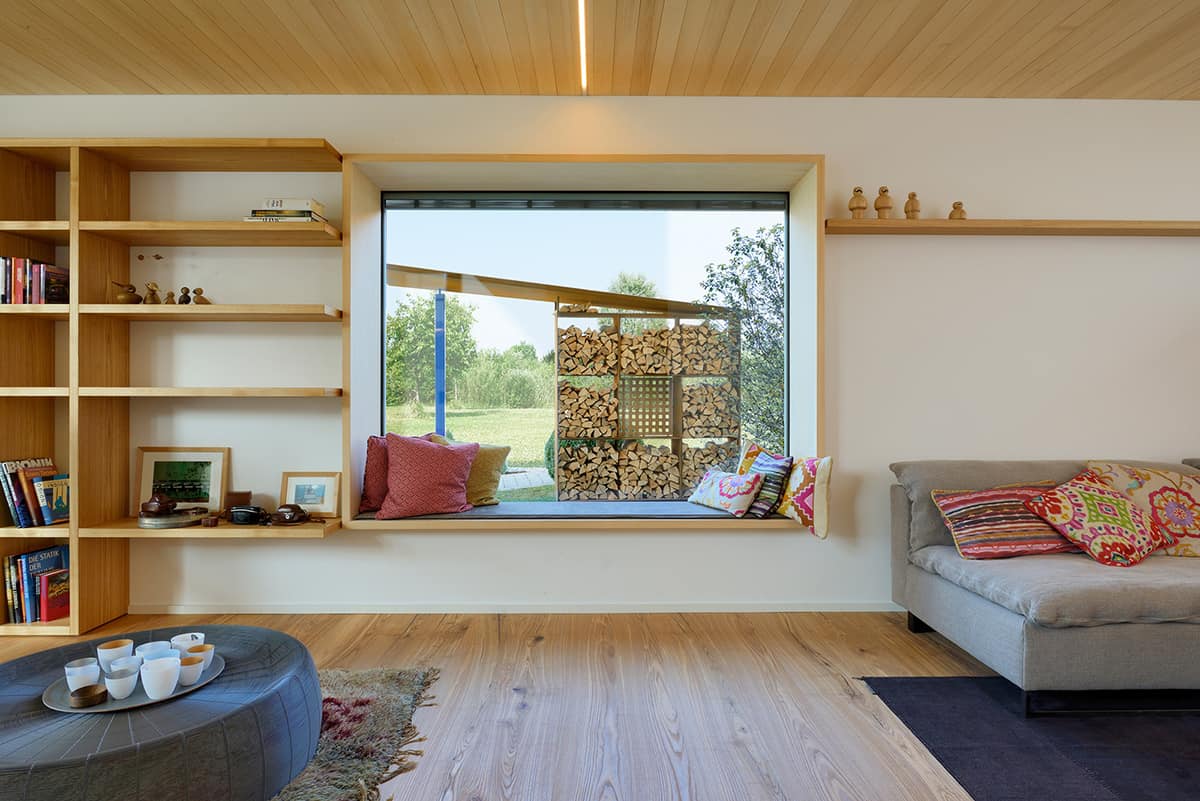
The wood for the fireplace is first stored outside in a shelter that is part of the wind tower turbine, making this wind turbine almost indistinguishable from its secondary purpose.
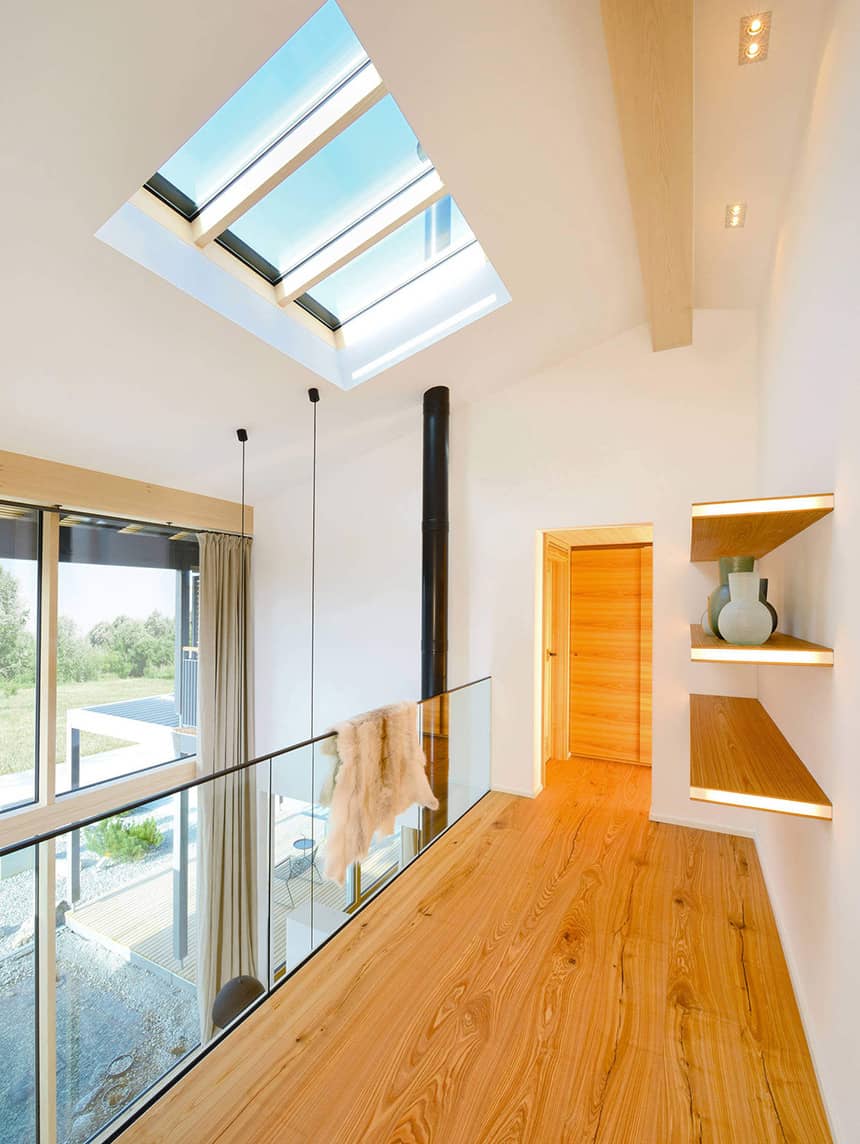
Upstairs the stairs lead to a hallway mezzanine with the bathroom/spa zone on one end, the master bedroom in the middle and the two children’s rooms on the far end. The mezzanine is kept well lit by a skylight above and the wall of glazings in the social zone below. Supplemental lighting is introduced via led strips on the sides of the shelving and on the ceiling.
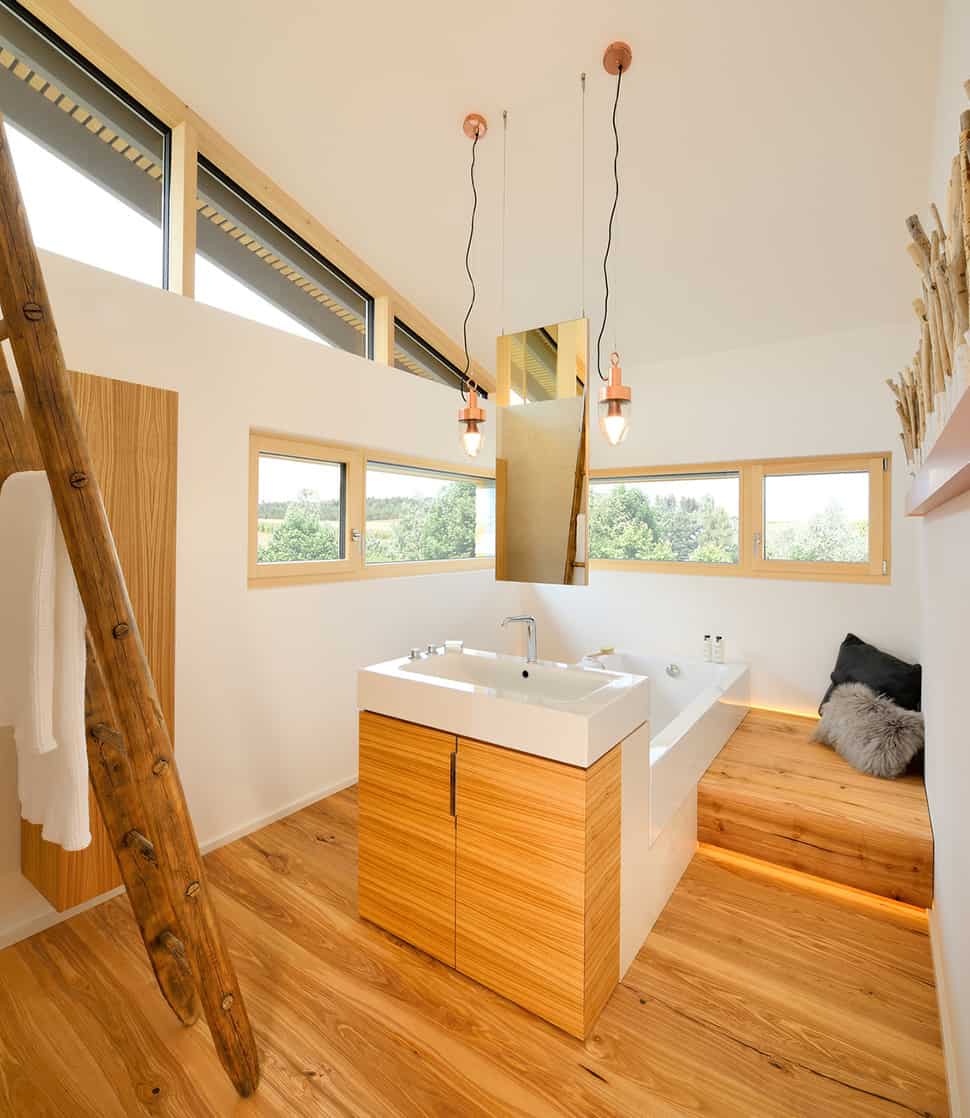
The bathroom is divided into four zones. The first is the tub and sink, the second is the glass enclosed shower, then the toilet and finally the Baufritz Sauna.
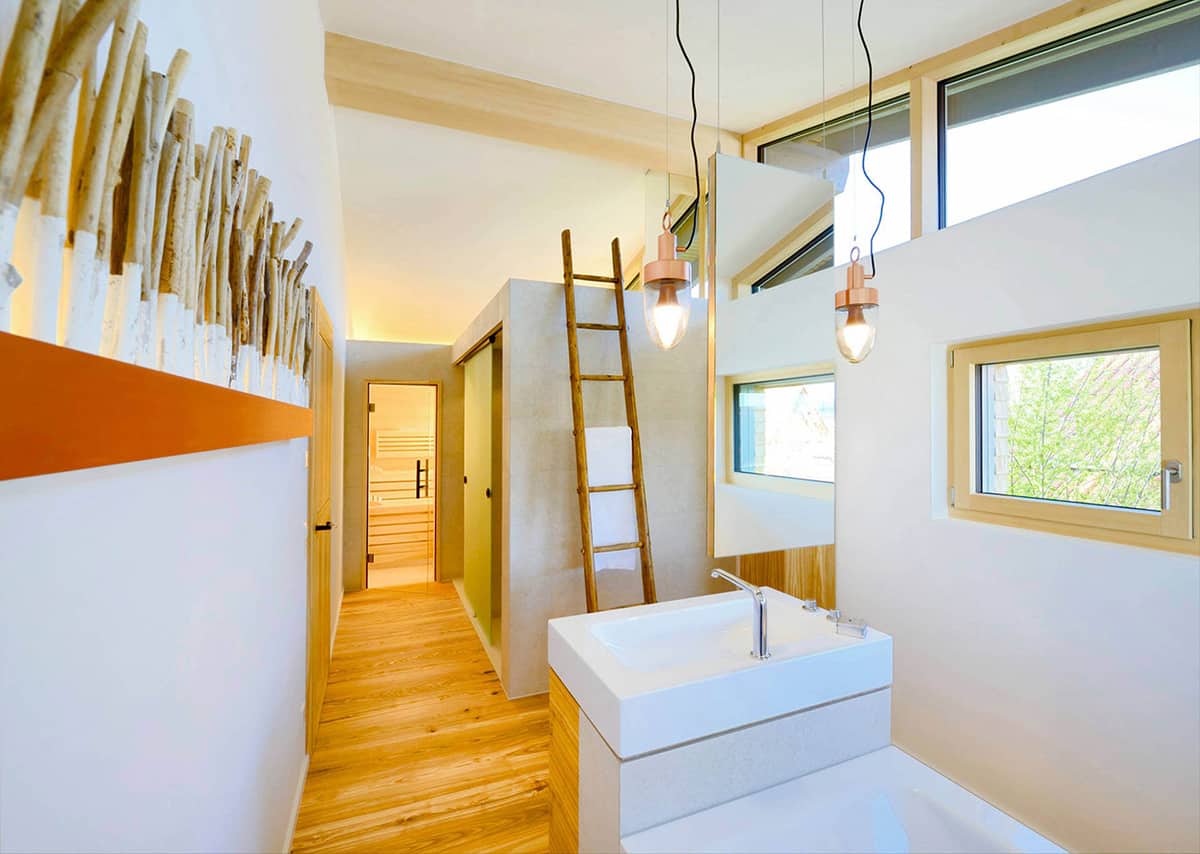
As with the social zone downstairs the bathing zone relies on authentic building materials to create Alpine charm albeit a high tech charm at that. I just love the twig light detail that runs the length of the wall and the towel ladder that leads to the space above the toilet room.

With each zone in the bathroom separated, the spaces can be used simultaneously which comes in handy in a family with children.
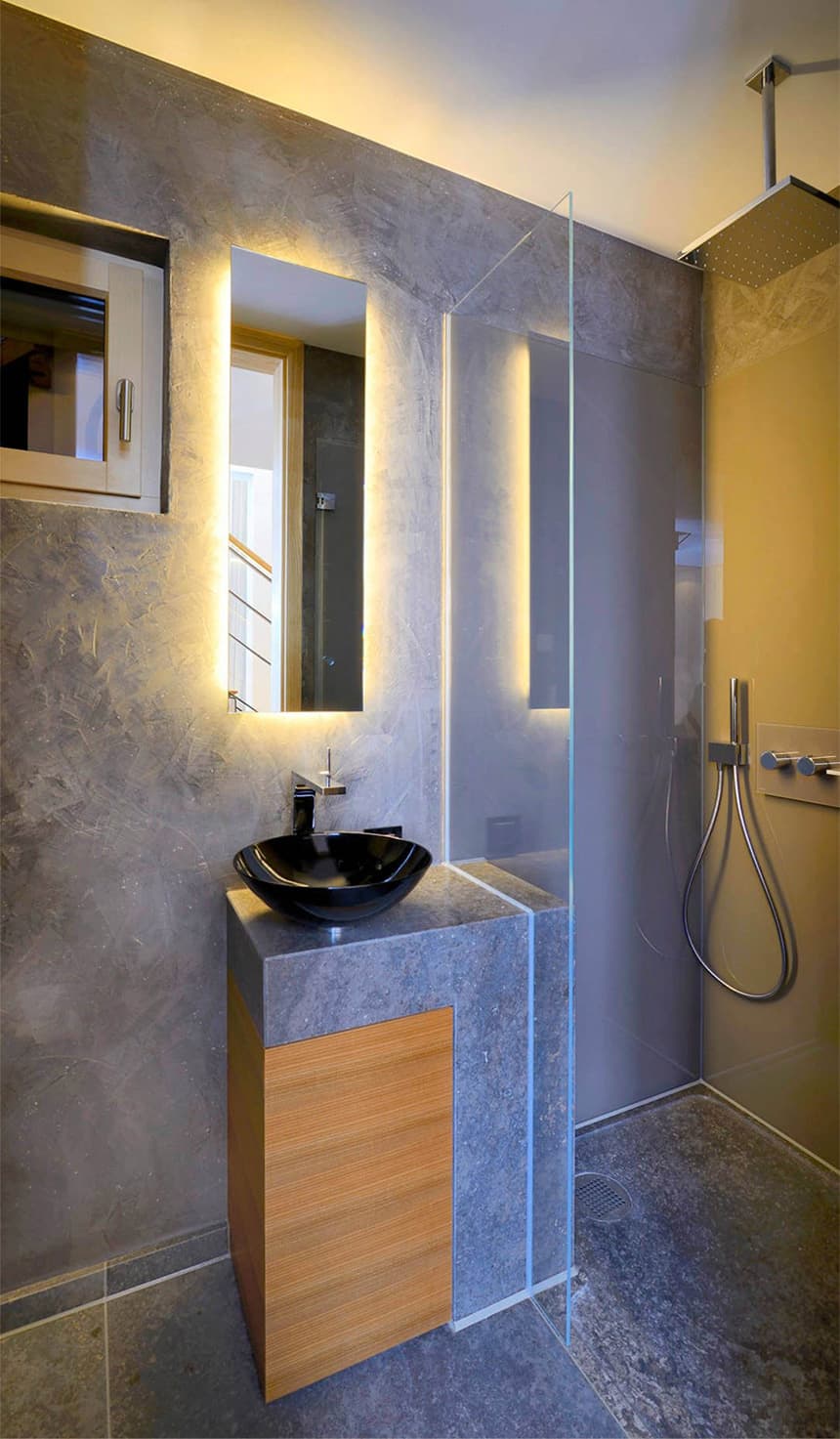
If by some chance the washroom upstairs is unavailable, the downstairs guest bath is fully outfitted with a toilet, sink and walk-in shower.
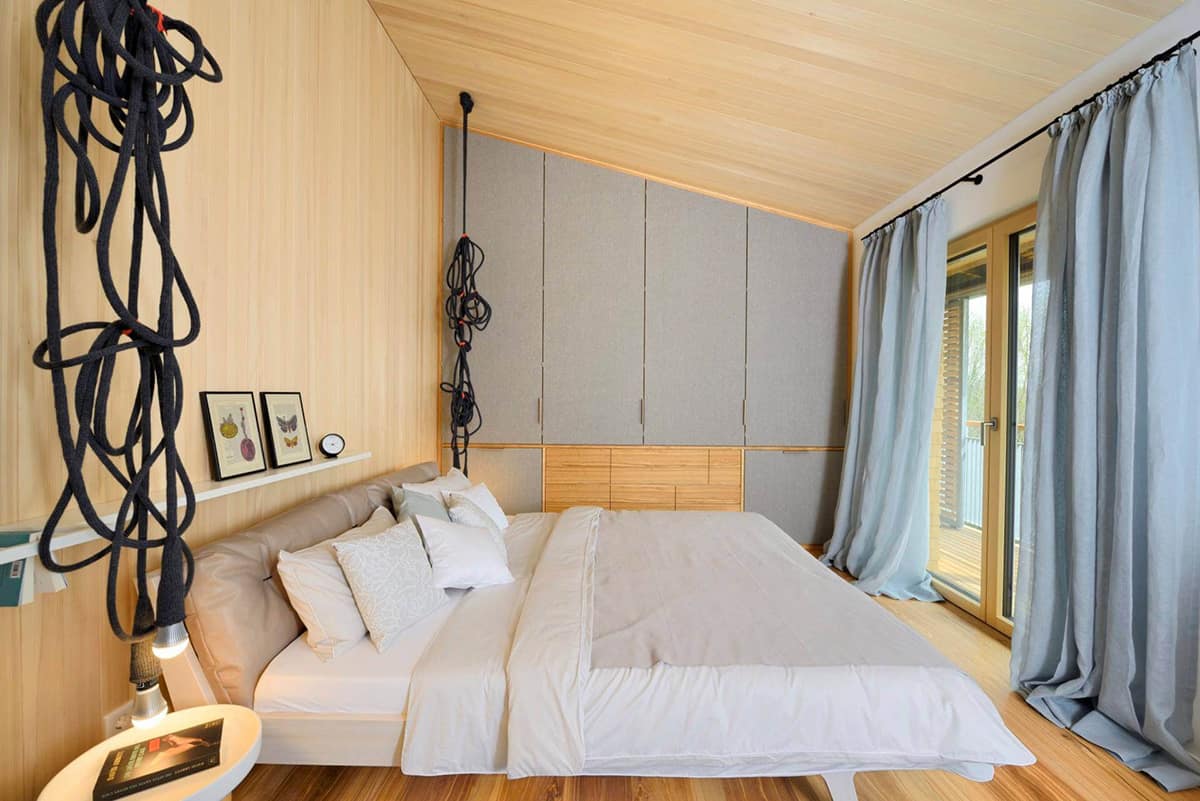
The master bedroom layers a little bit of industrial design into the otherwise Alpine aesthetic via the bedside table light pendants and their coils of cables.
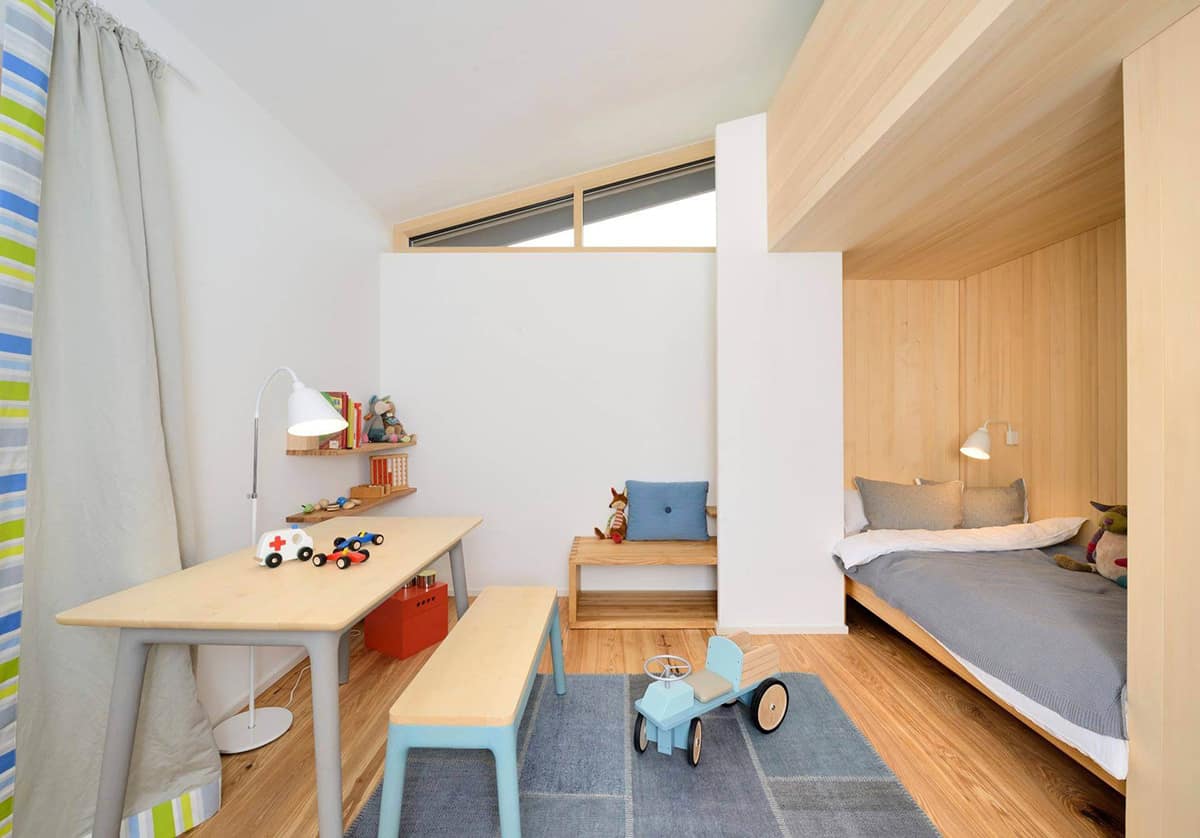
The children’s rooms use every available space both horizontally and vertically. Giving the children not only a place to sleep and play but a private place to study as well.
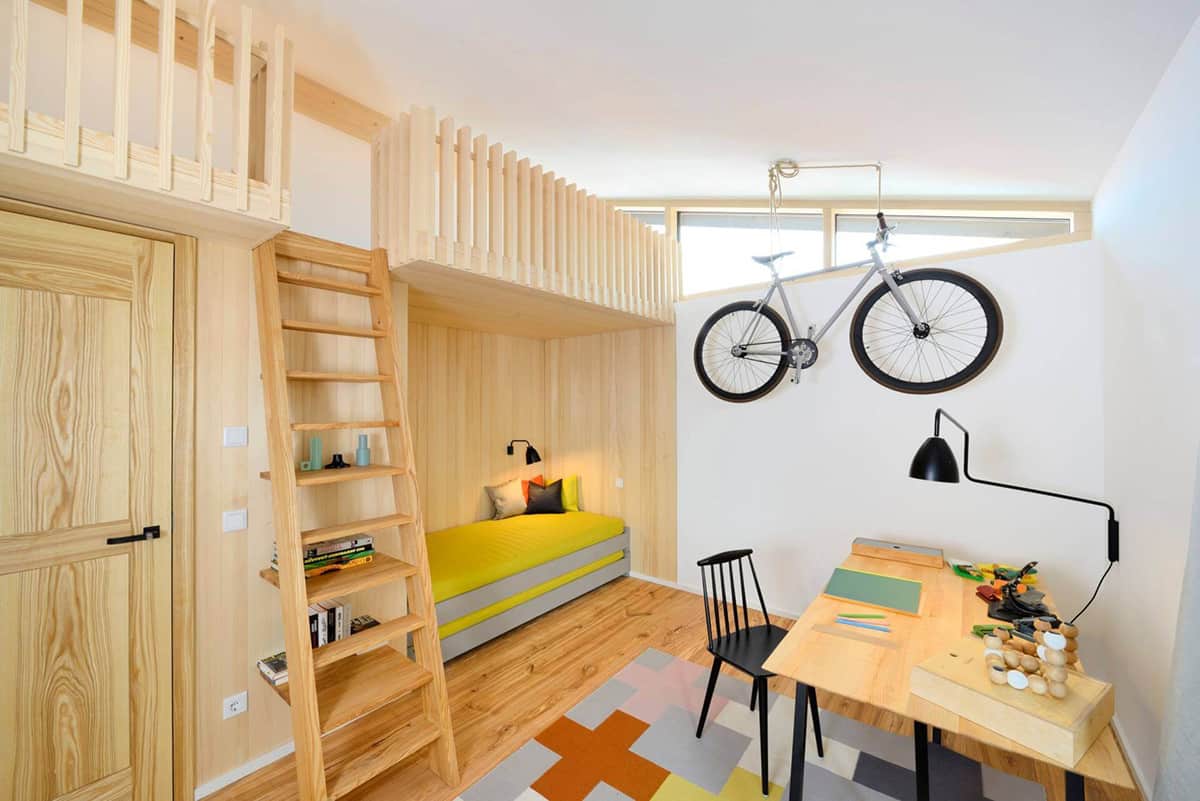
Both children’s bedrooms feature high windows for both privacy and to free up more usable wall space.
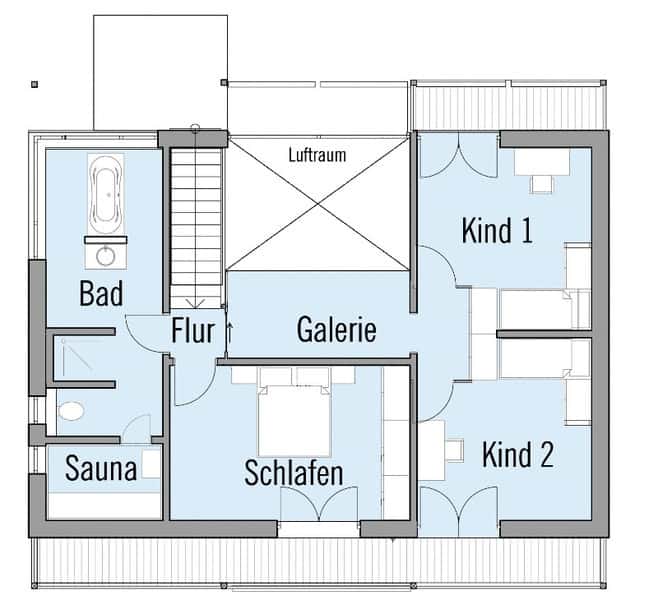
All three bedrooms have access to the outdoors via the two balconies.
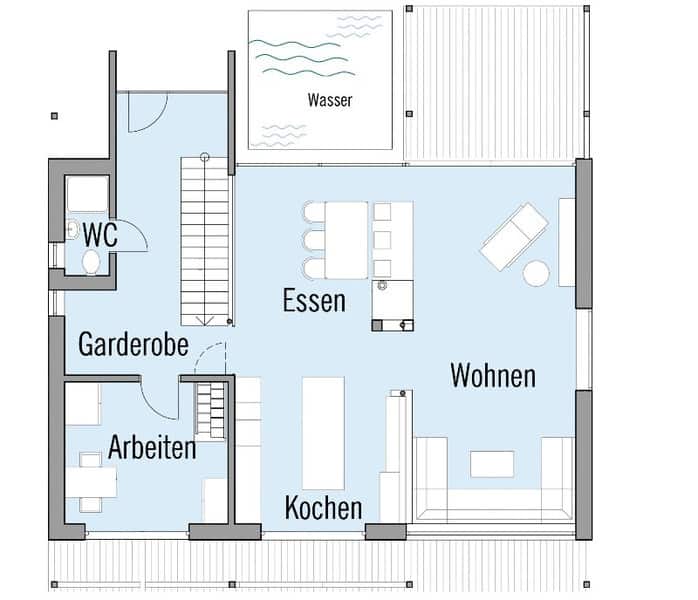
Not only is this Smart Home Alpenchic the first Minergie-A-ECO-certified building in Germany, it was also awarded a sentinel health certificate. One of its additional special features is a mini cellar under the house, made from recycled concrete in accordance with the criteria of the certification. In the cellar, is a water treatment plant for the drinking water. This is truly a real smart house designed not just for energy conservation but also for a healthy living environment.
Smart Home Alpenchic by Baufritz.
Georg Schauer Architect
